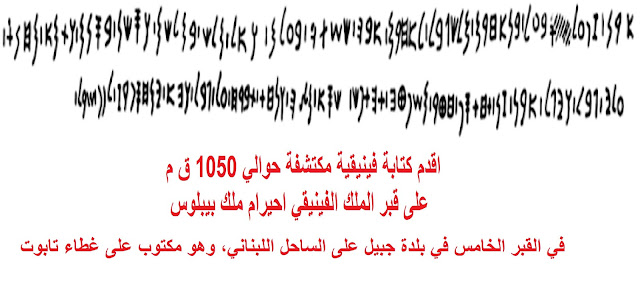Tifinagh dialectic

Archaeologists and archaeologists say that the Tifinagh in the Algerian desert dates back more than 7,000 years. But the age of the drawings and inscriptions has no relation to the age of the ancient writings in Tassili, Algeria. There are inscriptions and drawings, along with Tifinagh inscriptions, but the age of some of the drawings reaches 9,000 years, and the age of the writings is much less than them. One should not confuse the age of writing with the age of drawings
As for the Arabian Peninsula, some of its alphabet has been classified as dating back to the seventh century BC, meaning it is only about 2,700 years old, according to what they say.
! How did Tifinagh become a Saudi Arab heritage?
Indeed, how did it become a Phoenician heritage when it existed before the Phoenicians came to North Africa? Or before they appeared on the scene of events? When did the Phoenicians become Arabs? And their language is closer to Hebrew, and archaeologists resort to the ancient Hebrew language to decipher Phoenician writings and inscriptions?
The biggest problem is that the Tifinagh is present on Nigerian lands, so how did the Phoenicians get there? There are no traces confirming the Phoenician presence in the depths of the desert.
Let you know, the age of Tifinagh is estimated at three thousand years BC, as archaeologists recently confirmed. The alphabet of the Berber language is 5,000 years old from the present, which makes it one of the oldest and oldest languages in human history. Phoenician in the Levant, for example, appeared only 1,200 years ago BC. As for the script, The Himyarite Musnad appeared only 900 years BC.
The oldest Phoenician writing discovered dates back only to about 1050 BC, while the Tifinagh Berber script discovered in North Africa, especially in Al-Aqsa Morocco, is estimated to be 6 thousand years old.

The Phoenician alphabet was discovered on the tomb of the Phoenician king Ahiram, king of Byblos. This inscription was discovered by Pierre Montet in 1923 in the fifth tomb in the town of Byblos on the Lebanese coast. It is written on the lid of a coffin with drawings related to the subject of the inscription. It shows a scene representing the dead king eating a ritual meal, and carrying a lotus flower, hanging down, to indicate that the bearer is dead. This is an artistic element that has its counterpart in the ancient East.
While the oldest Yemeni script (Musnad) dates back to about 1200 years BC, and the Musnad appeared with the beginning of the first Yemeni civilizations, such as the Sabaeans.
The oldest Musnad script, according to Cron S analysis, which is the scientific technique used to determine the ages of ancient Musnad writings. The oldest Musnad writing is only between 900 and 1200 BC at the latest.
The authenticity of the Musnad is questionable because the royal scribe wrote it to Abraha al-Habashi during his campaign to destroy the Kaaba, and Yemen at that time was an Abyssinian colony, and there are those who attribute it to the Abyssinians.
Source: websites

